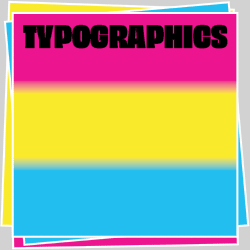TDC Medalist Louise Fili: Typography Animated by a Passion for the Past
The Type Directors Club is pleased to award its 28th medal of excellence to Louise Fili for her outstanding work as a graphic designer whose work, from book jackets to restaurant logos and packaging, has emphasized the beauty and power of letterforms.

For over forty years Louise Fili has created some of the most sumptuous, elegant and rich graphic design in America. Fili started her career as a senior designer for Herb Lubalin, working for the legendary designer from 1976 to 1978. There her nascent interest in lettering blossomed into a consuming passion that has animated her work ever since. However, her work during her time in the Lubalin studio was radically different from his, much less brash and more intimate. Instead of following Lubalin’s love for using type expressively, treating letters as the building blocks of elaborate yet compact textual structures and creating visual puns by substituting things for letters (and letters for things), Fili took a different tack. In this she was influenced by studio client Harris Lewine, art director at Harcourt Brace Jovanovich, who introduced her to design history.
As art director at Pantheon Books from 1978 to 1989, Fili’s book jackets—she designed nearly 2000 of them—were marked by the use of type and lettering that resonated with historical, cultural and literary allusions. In her hands letters were more than abstract shapes or textual components, they were alive with meaning. The cover lettering for When Things of the Spirit Come First by Simone de Beauvoir (1982), based on pastel shaded lettering by Gustav Jensen, immediately situated the stories in the 1930s; the typography for the cover of Franz Kafka: Pictures of a Life by Klaus Wagenbach (1984) evoked the Austro-Hungarian Empire of his earliest writings; and the Artistic Printing-influenced cover design for The Victorian Fairy Tale Book by Michael Patrick Hearn (1988) perfectly evoked its period. These, and numerous other jackets by Fili, avoided the charges of pastiche and nostalgia with their nimble twists of source material and skillful execution.
The success of The Lover by Marguerite Duras (1985), a runaway bestseller for Pantheon, validated Fili’s design history approach to jacket design. This approach marked an end to The Big Book Look pioneered by Paul Bacon that had dominated American publishing for nearly two decades. Fili’s work brought back subtlety and intimacy to book jacket design.

The retro-inspired work that Fili, along with Paula Scher (TDC 2006 medalist) and Carin Goldberg, did in the 1980s was an important part of what has come to be known as Postmodern design. Her use of pastels and secondary colors, outmoded typefaces and styles of lettering, and unpredictable typographic layouts (including centering and letterspacing titles) represented a direct challenge to the reigning tenets of Swiss modernist design. Fili helped make complexity and richness in graphic design acceptable again.
Fili’s work for Pantheon and other publishers in the 1980s was impressive, but it was only her first act. When she left Pantheon in 1989 to set up Louise Fili Ltd., she moved away from the book world and embraced the fickle but fun restaurant world. Fili began designing logos, stationery, menus and, eventually, other paraphernalia such as plates, matchboxes and check presenters for restaurants, clients who allowed her to indulge several of her passions simultaneously: design, design history, food, and—in many instances—Italy. Her work for restaurants past and present such as Picholine, Artisanal, The Mermaid Inn, Txikito, Metrazur and Bolivar brought a quietly urbane sensibility to the New York food world.

Once she began working for restaurants it was inevitable that Fili quickly added package design to her repertoire. Her specialty has been food packaging, from coffee and wine to crackers and jams. She has applied her trademark elegance and cultivated taste to products from Jean-Georges Vongerichten, Bella Cucina, American Spoon, Sarabeth’s and others. As she has expanded her design practice Fili has also expanded her range of design influences beyond her beloved Art Nouveau and Art Deco to include Renaissance paintings and prints, English Restoration calligraphy, and Edwardian typography.

One aspect of each of the phases and areas of Fili’s work—from publishing to restaurants to packaging—has been the design of identities. However, they are company identities not corporate identities, marks not logos. They exude personality. In this realm her work is the opposite of the focus-grouped, consumer-tested branding that is so popular today. Fili has used her deep love of unusual letterforms to create modern signatures for businesses from Hanky Panky to Tiffany & Co.

Fili’s work with its distinctive historicist aesthetic has had an enormous impact on American typographic tastes over the past four decades. That impact has been amplified since 1993 by a series of books co-written by Fili with her husband Steven Heller on Art Deco, magazine covers, shadow letters, stencil letters, scripts, Italian and Parisian street signs and more. The Fili style has been further spread by the work of her alumni, foremost among them Dana Tanamachi and Jessica Hische.
Lost in the emphasis on Fili’s luscious aesthetic and her deep plumbing of the typographic past is her role as part of a generation of women in the early 1980s who changed the gender dynamics of the graphic design profession. Since she opened her own practice over a quarter of a century ago she has been a role model for women designers, proof that they can escape the gilded ghetto of publishing and succeed in the broader world of graphic design without the aid of a male partner or the need to don masculine attitudes. Her small studio has nurtured a succession of women designers who have come to the fore as part of a new 21st century generation of eclectic typographers.
Books by Louise Fili
1993: Italian Art Deco: Graphic Design Between the Wars (San Francisco: Chronicle Books)—with Steven Heller
1994: Dutch Moderne: Graphic Design from De Stijl to Deco (San Francisco: Chronicle Books)—with Steven Heller
1995: Streamline: American Art Deco Graphic Design (San Francisco: Chronicle Books)—with Steven Heller
1996: Cover Story: The Art of American Magazine Covers 1900–1950 (San Francisco: Chronicle Books)—with Steven Heller
1997: Logos A to Z (self-published)
1998: British Modern: Graphic Design Between the Wars (San Francisco: Chronicle Books)—with Steven Heller
1998: German Modern: Graphic Design from Wilhelm to Weimar (San Francisco: Chronicle Books)—with Steven Heller
1999: Typology: Type Design from the Victorian Era to the Digital Age (San Francisco: Chronicle Books)—with Steven Heller
1999: More Logos A to Z (self-published)
2000: Design Connoisseur: An Eclectic Collection of Imagery and Type (New York: Allworth Press, 2000)—with Steven Heller
2001: Counter Culture: The Allure of Mini-mannequins (New York: Princeton Architectural Press)—with Steven Heller
2002: Logos A to Z Three (self-published)
2004: Euro Deco: Graphic Design Between the Wars (San Francisco: Chronicle Books)—with Steven Heller
2004: A Designer’s Guide to Italy. (self-published)
2006: Stylepedia: A Guide to Graphic Design Mannerisms, Quirks, and Conceits (San Francisco: Chronicle Books)—with Steven Heller
2007: The Civilized Shopper’s Guide to Florence (New York: The Little Bookroom)
2008: Italianissimo: The Quintessential Guide to What Italians Do Best (New York: The Little Bookroom)—with Lise Apatoff
2011: Scripts: Elegant Lettering from Design’s Golden Age (London: Thames and Hudson)—with Steven Heller
2011: Vintage Type and Graphics: An Eclectic Collection of Typography, Ornament, Letterheads and Trademarks from 1896 to 1936 (New York: Allworth Press)—with Steven Heller; reprint of Design Connoisseur with added CD
2012: Elegantissima: The Design and Typography of Louise Fili (New York: Princeton Architectural Press)
2014 Shadow Type (New York: Princeton Architectural Press)—with Steven Heller
2014: Grafica della Strada: The Signs of Italy (New York: Princeton Architectural Press)
2015: The Cognoscenti’s Guide to Florence (New York: Princeton Architectural Press)
2015: Stencil Type (London: Thames & Hudson)—with Steven Heller
2015: Graphique de la Rue: The Signs of Paris (New York: Princeton Architectural Press)
— Paul Shaw








